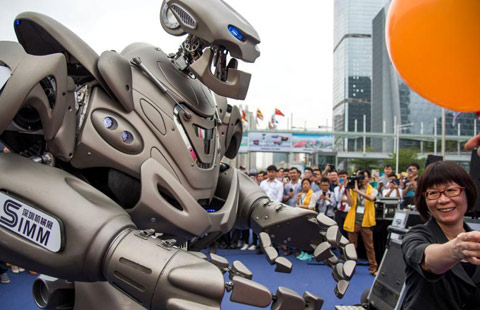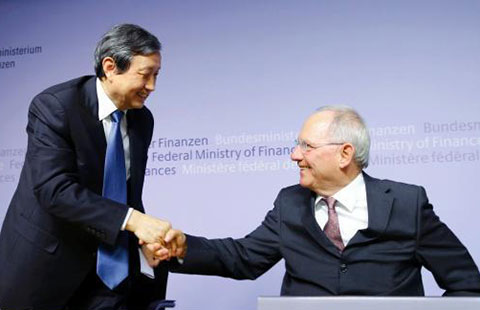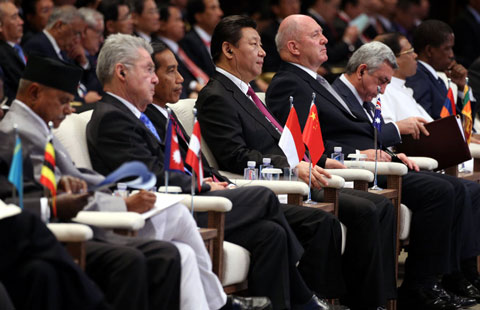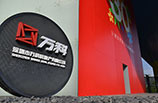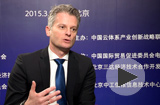Chinese railway suppliers on fast track to world market
By Lyu Chang (China Daily) Updated: 2015-03-03 06:54
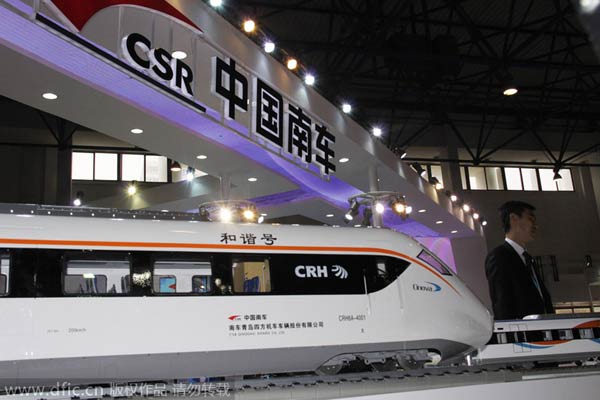 |
|
Models of high-speed bullet trains are displayed at the stand of CSR (China South Locomotive & Rolling Stock Corp Ltd) during the Modern Railways 2014 exhibition in Beijing, China, 30 October 2014.[Photo/IC] |
Looking to slower domestic conditions in the future, equipment manufacturers strike out on their own, reports Lyu Chang.
It is no secret that China wants to leverage its experience in building the world's largest network of high-speed rail lines into a new export industry.
But with growth in the domestic market stabilizing and the world market for high-speed rail lines yet to really open up, some Chinese companies that are part of the rail construction supply chain are seeking to enter foreign markets on their own.
CSR Zhuzhou Electric Motor Co Ltd, a subsidiary of China South Locomotive and Rolling Stock Co, is one example.
The Hunan-based company, which provides core elements such as traction motors and transformers to domestic train producers, said it is accelerating its own overseas expansion.
"The Chinese railway market is booming now, and there is still huge investment in fixed assets, but what about 10 years from now? China's manufacturing sector is crying out for consolidation due to severe overcapacity," said Richard Ouyang, deputy chief economist in CSR ZEM.
"The development of the rail sector will not be sustained forever, so naturally, we are taking the initiative to diversify our revenue streams."
CSR ZEM, the main production base of electric traction motors and transformers in China, has already made a huge breakthrough in the European market, albeit not in the rail sector. It signed a contract with a German company to provide a prototype model of a wind power generator with an installed capacity of 5,000 kilowatts.
"It looks like nothing, considering the value of the contract, but it marks our first concrete attempt to establish ourselves as an independent supplier and a strong competitor in a developed wind market," said Ouyang, who declined to give details on the German company.
"All I can say is that it is among the world's top 500 companies, and we will try to keep winning orders from it," said Ouyang, who is in charge of the company's overseas business department.
Germany's wind power industry has been growing steadily, and the market looks even more promising if the repowering of old systems is included.
"We are looking at a billion-dollar market with huge potential for growth, and we expect to raise our export value 10-fold every year," he said.
The Chinese company, which started its wind power business in 2004, generated about 6 billion yuan ($960 million) in sales last year, with revenue from the wind power industry accounting for 30 percent to 40 percent of the total.
- Israel requests to join Asian Infrastructure Investment Bank
- Chinese stocks rebound on April 1
- China, the West in Africa: more room for cooperation than competition
- Nanjing cuts taxi franchise fees
- Air China increases flights to Milan, Paris
- JD.com raises delivery charges
- Veteran corporate strategist upbeat about China economy
- L'Oreal China sales revenue up 7.7% in 2014
